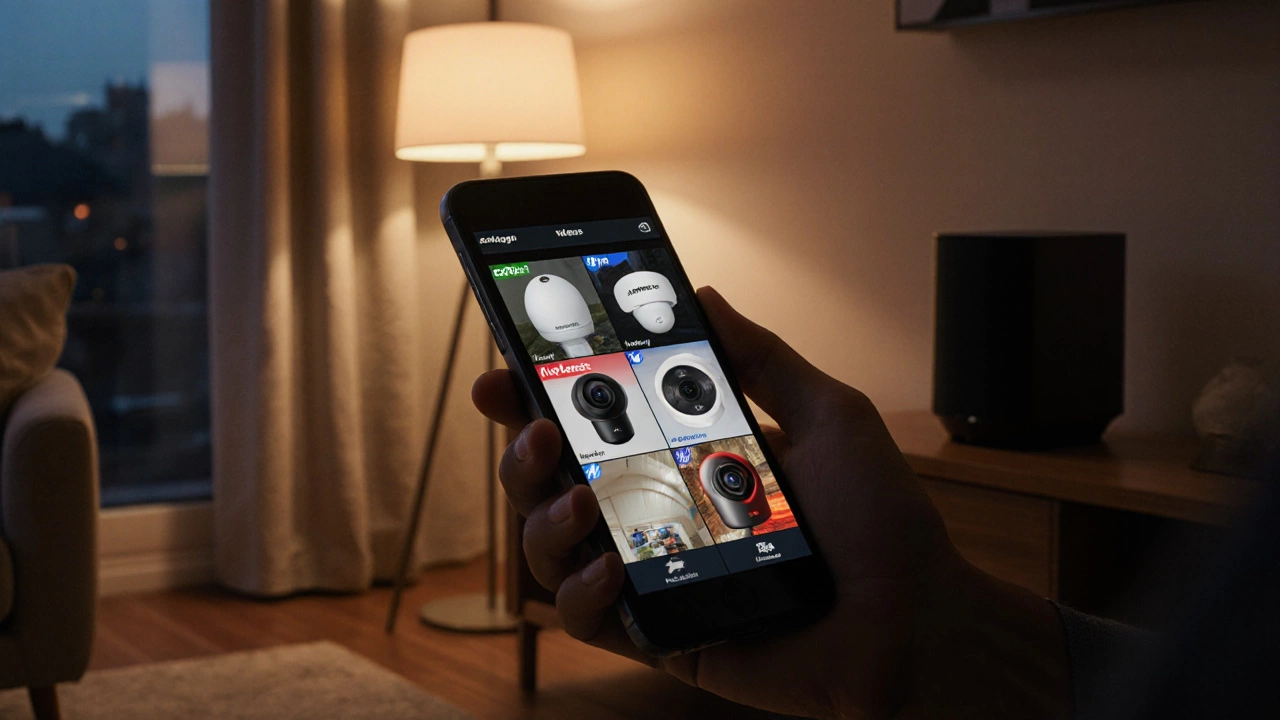When you have security cameras from different brands—maybe a Ring, a Nest, a Reolink, and an old IP camera you kept from a previous setup—you don’t want to juggle five different apps just to check your front door. That’s where a multi-brand camera app, a single application that connects to cameras from multiple manufacturers. Also known as universal camera viewer, it lets you see live feeds, review recordings, and get alerts from all your devices without logging in and out. Most people assume each camera needs its own app, but that’s not true anymore. Modern multi-brand camera apps act like a central hub, pulling data from ONVIF-compatible devices, cloud services, and local NVRs. You can watch your backyard camera from a Reolink, check your Ring doorbell, and see footage from an older Hikvision unit—all on the same screen.
Not every camera works with every app, though. The key is ONVIF, an open standard that lets security devices from different brands talk to each other. Also known as Open Network Video Interface Forum, it’s the glue that holds multi-brand systems together. If your camera supports ONVIF, chances are it’ll connect to apps like TinyCam, Alfred, or iSpy. But if it’s locked into a proprietary ecosystem—like some older Arlo or Blink models—you might be stuck using their own apps. That’s why checking compatibility before buying a camera matters. You’re not just buying a camera; you’re buying into a system. And if you plan to mix brands later, you need to plan for integration.
Another big piece is cloud storage, the online space where camera footage is saved and accessed remotely. Also known as remote video storage, it’s what lets you view recordings even if your Wi-Fi goes down or your local hard drive fails. Some multi-brand apps let you store footage in the cloud across brands, while others only show live feeds. If you want to keep history without paying monthly fees, look for apps that support local NVRs or SD cards. You can still use the app to control everything, but the storage stays on your own device. That’s safer, cheaper, and gives you full control.
Setting up a multi-brand camera app isn’t hard, but it takes a little patience. You’ll need the camera’s IP address, username, password, and sometimes the RTSP stream URL. Most apps have a step-by-step wizard for this. Once it’s done, you can group cameras by room, set custom alerts, and even create motion zones that only trigger for people—not pets or passing cars. You can also turn off notifications for cameras you don’t need to monitor all the time. That cuts down on alert fatigue and helps you actually pay attention when something matters.
And if you’re worried about privacy? Good. A solid multi-brand app lets you disable cloud access entirely, use local-only streaming, and control who can see your feeds. No third-party servers storing your footage unless you choose to. Some apps even let you encrypt streams end-to-end. That’s not just a feature—it’s a necessity if you care about your data.
What you’ll find in the posts below are real guides on how to connect your cameras, which apps actually work across brands, how to fix common connection issues, and what to avoid when mixing hardware. You’ll see how to watch your cameras online without paying for cloud subscriptions, how to use your phone as a monitor, and why some cameras just won’t play nice—no matter what app you try. No fluff. Just what works, what doesn’t, and how to fix it.

Explore if a single app can manage all your security cameras, why true universality is still out of reach, and which multi‑brand apps come closest.